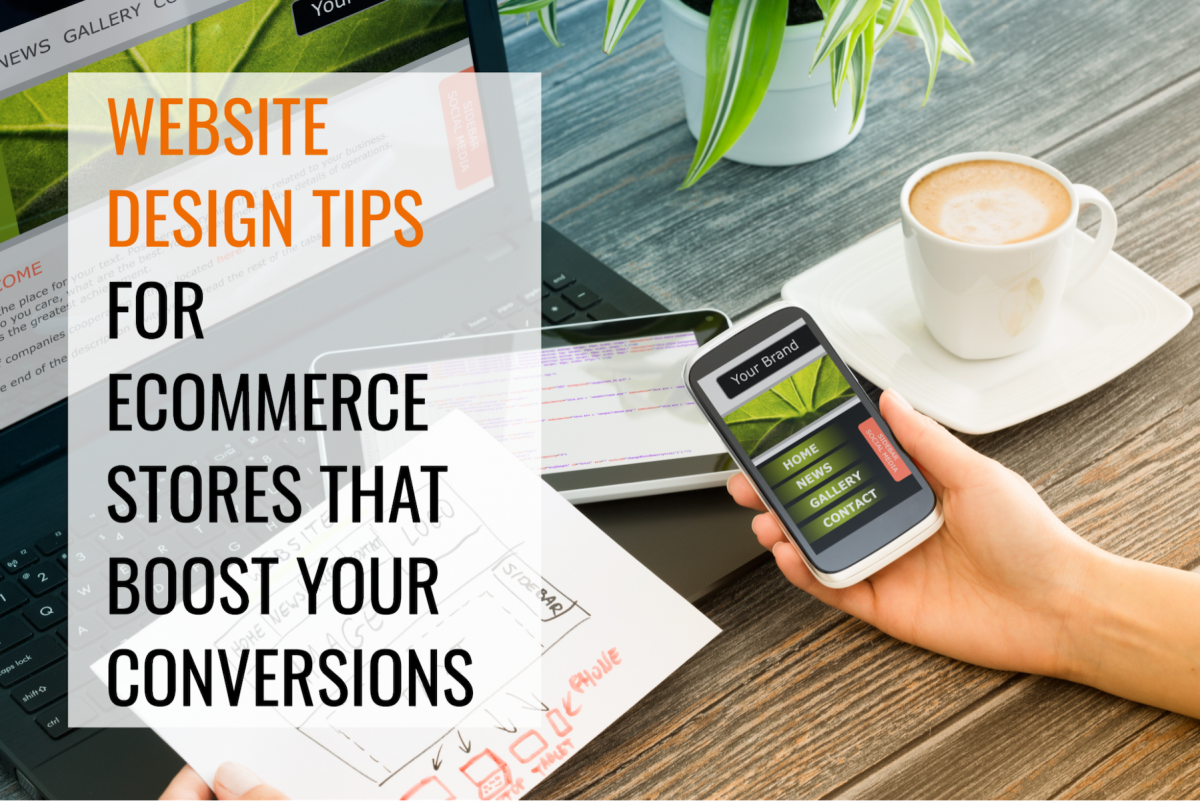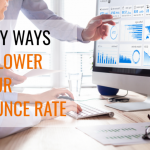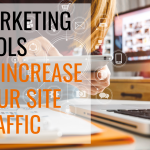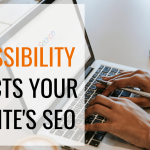Looks aren’t everything—unless you’re an ecommerce website. For online sellers, it’s a fact that you’ll want to ensure that your website is looking its very best. It’s not just to give people something nice to look at; your website’s appearance significantly impact your conversion rates as well.
Great SEO and visibility are important for drawing people to your website. But once they’re in your online store, how do you get people to click that “Buy Now” button? How do you convince them to purchase more per order?
The secret is making sure all your website elements are optimized for conversions and sales. That includes everything your customers see when they browse through your site: colors, fonts, images, copy, and special offers.
If you’re wondering how your ecommerce store can earn more revenue with a few website design changes, then this article is for you. I recently went through a careful website analysis with a good friend of mine who’s crushing it with his online retail business.
He has run countless A/B tests on different versions of website design and copy, discovering a great deal about things that encourage conversions and what doesn’t. He shared with us some golden advice on what changes ecommerce store owners can test to see if it makes a difference in their own storefronts.
There were a few unexpected ones that boosted conversions and increased Average Order Values (AOVs), both vital metrics if you’re looking to scale quickly and efficiently. We’re showing you all of the examples below, with screencaps and actionable tips to help inspire your own A/B testing.
Let’s get started now.
Why You Should Monitor Your Website Metrics and Run A/B Tests
The best companies rely on data to make business decisions. Today, it’s easy to access and monitor your website metrics to see what’s driving (or slowing down) conversions. This can be done through A/B testing, or split testing. Harvard Business Review defines A/B testing as, “A way to compare two versions of something to figure out which performs better.”
Of course, it doesn’t have to be only two versions. You can test all of the changes that you’re making to see which one works best. Just make sure you test each change one at a time so you know what’s working.
However, be careful about going down an A/B testing rabbit hole where you’re just testing for vanity metrics. As Neil Patel says, “Testing every random aspect of your website can be counter-productive. So before you dive in, make sure to think about what your goals are.”
There’s no point in measuring traffic, for example, if it’s not relevant traffic and your sales don’t increase. So make sure you’re clear on your desired outcome before you start measuring.
Now, here’s a look at some things that you’ll want to A/B test to see if they’re worth adding to your ecommerce store. See simple changes that you can implement that could drastically improve your conversion rates.
Boost Your Conversions: Strategies for Ecommerce Stores
Even minor changes can have a big impact, and often it’s the things that you least expect that make the biggest difference. With this in mind, here are some features that you’ll want to consider implementing on your own ecommerce website or conducting A/B testing on.
A Clear Value Proposition
A value proposition is what your company promises to deliver when customers purchase a product or service from you. What pain points are you solving? It’s what sets your company apart from the rest of the competition. It’s important to present your value proposition in a clear and strong way, so it will be easier for customers to associate it with your brand.
“Your value proposition should focus on the superpowers that potential customers get, not the product. Rarely is your value proposition the product itself or its features,” Shopify advises. “Instead, it’s the way the brand or product fixes a meaningful pain point, improves the lives of your target audience, and the way it makes them feel.”
My friend understands this well and applies it to his own ecommerce business. His company sells vitamins and supplements and their value proposition is “Aesthetics, Performance, and Health.” Notice how this value proposition talks about what people can achieve if they use these products.
That sounds much more appealing to a customer because it immediately solves a major pain point: anything that’s holding them back from reaching their health and fitness goals.
He says that clearly identifying their goals and what they’re offering resulted in big conversion boosts. The logo alone, mentioning the value proposition, gave them their biggest conversion boost of 150%. Everything about it was A/B tested including the triangle, the image of a family inside, the tagline, and the benefits.
And be sure to make your value proposition visible throughout your website. On his storefront, the “Aesthetics, Performance, and Health” seal features prominently on their shop page, right next to the products. It helped to give them a big conversion bump as well.
Brand Credibility Pieces
Seeing positive feedback about a brand or product creates interest and trust. Social proof and recommendations made by other people, especially by experts, increase conversions because it validates the customer’s buying decision.
My friend knows that brand credibility matters and they incorporate it well into their ecommerce store.
His website features a great combination of social proof from the following groups of people:
Medical and Scientific Experts: This is an important one. Highlighting the science and scientists behind their products provided them with a big conversion boost. He found that adding results for scientific studies gave them a 15-20% conversion increase.
Interestingly, their A/B tests also found that black and white images of their doctors and experts actually resulted in better conversions than the colored versions.
(Source: BiOptimizers)
Fitness Leaders and Influencers: Influencer marketing continues to be a strong marketing channel that results in great Returns On Investment (ROI). Companies who have a strong understanding of how it works reported returns as high as $18 per dollar invested, according to Influencer Marketing Hub.
Media Features: Don’t forget to highlight media coverage of your product or company. That can include podcasts, interviews on TV or on popular YouTube channels, or print features.
Customer Reviews: When choosing which customer reviews to highlight, BiOptimizers chose a mix of reviews talking about their company and products. This is a great move that shows a more holistic view of the company, its values, and customer service. All of which are important in gaining trust.
Pro tip: With my ecommerce store, we found that adding social proof just below the payment button resulted in increased conversions.
Brand Storytelling
These days, people prefer to deal with companies that are authentic in their marketing. For ecommerce stores, this is especially important. Having a virtual storefront compels you to find other ways to present the people behind the business, and brand storytelling is one great way to do this.
It shows people your motivations behind the business and allows you to connect with them on a deeper and more personal level. Adding a brand story page resulted in a higher conversion rate for BiOptimizers.
Spotlight on Ingredients or Components
Consumers are now more conscious about the products they buy and how things affect their health. Being transparent shows people you care about their needs. Gallant and I both discovered that having a section on our site dedicated to product ingredients resulted in a conversion bump as well.
Pro Tip: Go beyond simply listing ingredients. To make it more engaging and value-packed, add images and benefits or studies for the most important ones.
Pet food ingredients on my ecommerce shop, VetNaturals
(Source: BiOptimizers)
Video Content
“When it comes to video content, execution is everything,” Gallant says. He’s been investing in video that’s engaging and draws people in.
He recommends investing in a person or company who captures your vision and can translate it well into video advertising.
In their advertising video, he included the things which he knows drive conversions and sales: the science, their mission, and core values. This video gave them a 50% increase in conversions. He made a version that’s used strictly for the website and links back to the product pages.
Get our Website Design Tips For Ecommerce Stores That Boost Your Conversions - Worksheet delivered right to your inbox.
(Source: BiOptimizers)
Comparison Charts, Frameworks, and FAQs
On the BiOptimizers website, Gallant found that comparison charts and frameworks often lead to conversions. Users get a lot of information in just one glance, in an easy-to-understand and engaging way. It goes back to people wanting more information before purchasing. By giving them the most important details, you answer their questions and give them the confidence to finally hit that Buy Now button.
(Source: BiOptimizers)
FAQ pages are another source of important information, and we found an interesting result when we experimented with its placement. People usually do a few routine things when they get to a page, they read the first few lines, then scroll to the bottom.
We found that adding FAQs at the bottom of the page boosted conversions for my cabinet company. Having FAQs as people scroll down allows us to answer their questions without having to go through customer service.
Sales Bundles
People love to shop, but they also love saving money. As a retailer, you can offer the best of both worlds by giving special offers through up-sells, cross-sells, and sales bundles. These are called order bumps, which Teachable defines as, “A way to add on an additional product on the checkout page. The offer is presented directly on the checkout page, and with a single click, the customer can add the additional product onto their purchase.”
E-tailing Group says that tactics like these generate as much as 10-30% of extra revenue.
Amazon’s subscribe and save tactic resulted in huge profits for them. This is especially great for items that are consumable and need to be repurchased on a regular basis. Take this example from Neurohacker Collective, a supplements company.
Notice the placement of the call-to-action buttons under the price. The Subscribe and Save button mentioning the savings amount of $80 is placed first. When clicked, it shows $59 for the first shipment and $119 after. Below it is the One-time Purchase button that when clicked, shows the $139 price. If you were the customer, wouldn’t Subscribe and Save make more sense? By doing this, Neurohacker saw huge conversion bumps and a 50% increase in subscriptions.
(Source: Neurohacker)
BiOptimizers added bonus incentives on their checkout page. On the shopping cart, bonuses get triggered at different tiers. They offer extra value such as free shipping, content, or a bonus gift for customers who purchase more.
(Source: Masszymes)
Their bundling and subscribe and save tactics bumped up their Average Order Value to $130 on average, which is a great number for this industry.
(Source: BiOptimizers)
For VetNaturals, I tested different variations of product bundling. I did a test on two, four, and six-pack offers versus three, six, and nine packs. I found that the three-six-nine combo worked better. Most people go for the three-pack, and for this group, I realigned my marketing strategy to get them to purchase more. Adding a twelve-pack option also resulted in a conversion bump.
Pro Tip: Conditioning your customers to buy bulk purchases is a win-win situation for both sides. It saves your customers, not just money (on shipping and wholesale pricing) but time and effort. For retailers, it improves your Average Order Value and Customer Lifetime Value as well.
(Source: VetNaturals)
Colors, Fonts, and Design Principles
When it comes to design, less is more. We found that fewer colors and font variations resulted in better conversions. Uniformity in your branding and visuals draws people in and gives them something to associate your brand with.
Colors: Many of the world’s biggest brands are immediately associated with certain colors. Think red and yellow for McDonald’s or Starbucks’ green. They also use their main colors on their website, packaging, and marketing materials. Three or four colors max is usually recommended for better conversions.
Fonts and Text: Based on Gallant’s tests, fonts are a huge needle mover when it comes to conversions. A common design mistake he sees on some websites is the use of too many different fonts. In his store, the formula that worked best and gave them huge bumps was using only two types of fonts, one for the body and one for the headline. The best type of font is something unique yet readable.
Call-to-Action (CTA) Buttons: Your CTA buttons are one of the most important elements on your website. Optimizing the color and placement can result in huge bumps as well. Choose a color that pops and stands out from the rest of your page. On Gallant’s A/B test, adding logos of credit cards on the bottom or a money-back guarantee on the “Buy Now” button resulted in conversions.
Images: High-quality images are big conversion boosters. You should also experiment and run A/B tests on different versions of product images. See what happens if you change the size in relation to the background, the background colors, or the arrangement of the items. I also sell my VetNaturals products on Amazon. On one product photo, we added some chews on the bottom corner of the photo. This unexpectedly led to increased conversions, especially on Amazon.
(Source: VetNaturals)
Trim to Break Up Text: Adding a thin, green line to break up the page into different sections led to a shocking lift in conversions. It’s easy to see why; it increases readability and sucks your eye in. You expect to see something new and it encourages you to keep scrolling to the next sections.
(Source: BiOptimizers)
Customized Copy Length
Customize your copy for the type of traffic that you have. BiOptimizers uses three styles of product-specific pages. Copy length matters when it comes to cold, warm, and hot traffic.
- For cold traffic, you can have longer copy and content.
- For warm traffic (from affiliates, influencers, and podcast referrals), a quarter of copy was enough to get users to convert.
- For hot traffic, he found that nothing increases conversions. In fact, when they added more copy than what was needed on the product pages, it decreased conversions.
(Source: BiOptimizers)
A Return Guarantee
When buying online, customers don’t have the typical shopping experience of touching and seeing the items before paying for them. That’s why for ecommerce retailers, money-back guarantees assure your customers that if they’re not satisfied, they can always return the products.
Gallant tested what a 365-day money-back guarantee could do for conversions. It led to a 10% conversion bump and fewer refunds. He adds that based on his tests, the number of days promised seemed irrelevant. He trialed all kinds of generous guarantees but strangely, all of them resulted in more or less the same conversion rates.
He also suggested a power move that helped them reduce refunds. When a customer wanted to return a product, they offered to exchange it with another product for free. They still kept the option for refund open in case the customer still wasn’t happy. In many cases, the customers kept the new product, and refunds were reduced by about a third.
Pro Tip: On your checkout page, adding a headline mentioning the risk-free, money-back guarantee can result in a conversion bump.
(Source: BiOptimizers)
Ecommerce Conversion Rate FAQs
What does conversion rate in eCommerce mean?
Your conversion rate is the percentage of visitors that end up converting. Usually, this means purchasing or subscribing.
What is a good conversion rate for eCommerce?
Between 1 and 4% is considered to be a good conversion rate, but it will depend on your industry and the type of products you’re selling.
How do you calculate eCommerce conversion rate?
Your conversion rate is the number of conversions divided by your total number of visitors.
The Next Steps
So what’s the takeaway from all of this? At the end of the day, even small changes can have a big impact on your conversions, so don’t be afraid to try different things to see what works. Soon you’ll get a feel for what makes a difference and what doesn’t move the needle as much and A/B testing will become second nature, giving you an effective way to steadily increase your ecommerce conversion rates.
- Step one: Find some of the above A/B tests that you can implement. Start with the one that you think will yield the best results.
- Step two: Start your A/B test. Make one change and note whether it makes a difference in your conversions.
- Step three: Go with the version that yielded the best results. Or, go back to the drawing board and try again. A/B testing can be exciting, especially once you find something that works and makes a big difference to your bottom line. Have fun!
Looking to increase your conversions and grow your ecommerce store quickly and efficiently? Reach out today for your FREE 20-minute consultation call, and let’s find some solutions that’ll help you to grow your business fast.
Get our Website Design Tips For Ecommerce Stores That Boost Your Conversions - Worksheet delivered right to your inbox.







